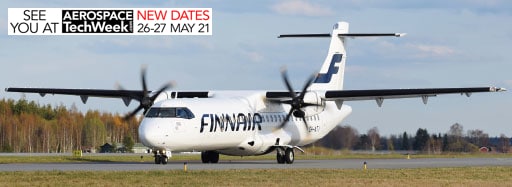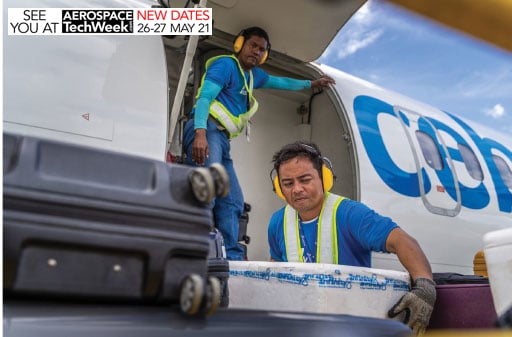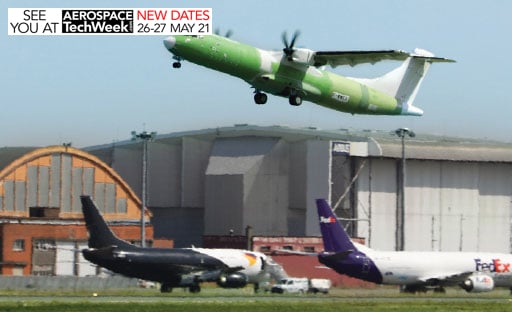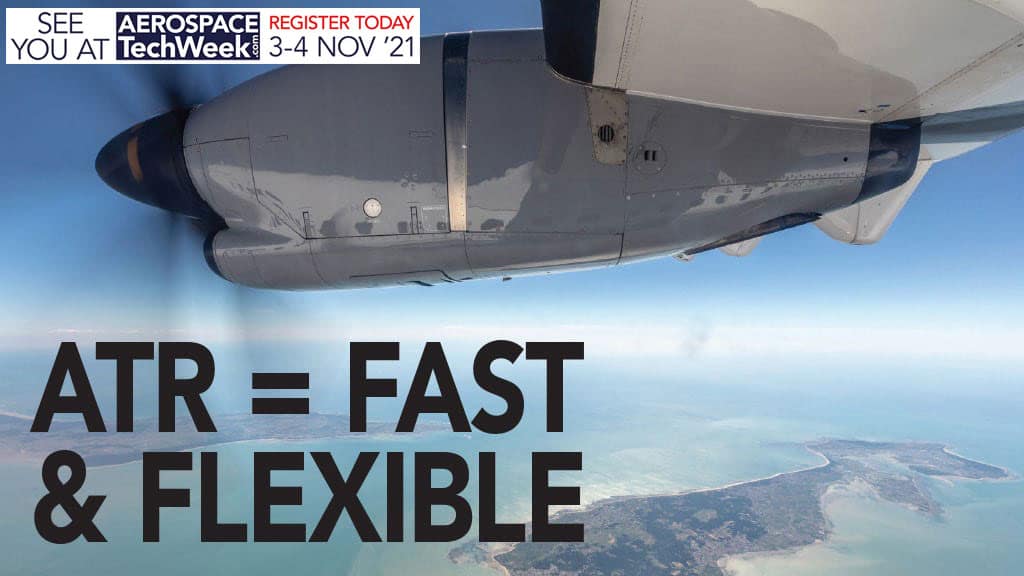ATR is working hard to ensure its customers stay flying through COVID-19 and into the future with an interesting series of initiatives
Laurent Caballe, VP Products and Services, says around 60 percent of the ATR 42/72 fleet has remained flying during the pandemic. This is partly a reflection of a customer base that includes many airlines in remote areas and islands, where aircraft are absolutely vital in a crisis like this one, delivering key equipment and personnel where and when needed. It is also a reflection of the feeder role that ATR operations play for some airlines. With long haul services being slashed, there are fewer transfer passengers, so the smaller ATR can replace an Airbus A320/Boeing 737 sized aircraft to maintain important routes into major hubs while reducing operating costs for the airline.
Where airlines have grounded aircraft, the company has been providing engineering advice through Operators Information Messages (OIM), for example, how to avoid corrosion in the propellers during storage. He notes that operators are mainly choosing to park their aircraft. Airworthiness authorities require that they have to fly at the end of three months or they will be put into storage, a more complicated expensive option that also requires more time to get them back into service. The simplest way of avoiding this is by rotating aircraft in and out of the operational fleet.
As many ATR operators also tend to be smaller airlines, the company developed its General Maintenance Agreement (GMA). This has been running for 20 years and has grown to cover over 70 percent of the worldwide fleet (under Power By the Hour terms), with more than 390 aircraft with more than 60 customers. It has also attracted larger airlines as well.
The GMA can be customised to suit the individual needs of airlines, depending on where they are in the world and their specific operating conditions, but the essence of GMA is repair, overhaul, pooling services of Line Replaceable Units (LRUs) and transportation of LRUs to the airline’s facilities. For the first, ATR has a network of repair shops and by consolidating the work from several sources, can negotiate better prices. A faulty part is returned and replacement issued from one of three spares centres – Paris, Singapore and Miami. After repair, it is returned to the pool. The spares centres carry around $350 million in stock and 95% of orders are normally fulfilled in less than two days. Each operator has its own leased pool stock at its main operating base, the components held being based on actual consumption trends to avoid holding seldom used items, but it has access to the main pool as well. ATR says aircraft covered by GMA fly an average of 300 more flight hours per year compared to non-GMA aircraft, which amounts to $1 million of extra revenue over 10 years.

maintain important routes into major hubs while reducing operating costs for the airline. ATR Image.
Payment is based on monthly flight hours, with a defined minimum level. Given that many operators are currently running a reduced schedule, Caballe says ATR has adjusted payments, as far as possible, in line with actual hours flown to help with reducing costs. Similarly, the monthly rate for stock access has been reduced as well. However, it has also reached out to non-GMA operators by allowing them temporary access to both the repair network (on a time and materials basis) and highly discounted standard exchange spares, helping their cash flow as well.
A further incentive is ‘Spares Day’, when components are offered with attractive price reductions. The first was held recently with a mix of parts including high consumption items. This is another way of ATR being able to assist customers in difficult times.
As GMA provides ATR with a detailed overview of trends in spares consumption and repairs, it has a team dedicated to engineering analysis. This can reveal an issue relating to a particular airline as it stands out from the rest of the worldwide fleet. Solutions can include upgrades, troubleshooting advice, training or specific maintenance procedures.
In recent years, leasing companies have become significant purchasers of ATR aircraft and the company is now offering complementary CAMO services as part of GMA. Leasing companies also want quick transitions between clients and this work often includes modifications. In addition, there is a constant improvement programme as requirements change.

ATR image.
Caballe says airframers cannot be too dogmatic about what happens to the aircraft. As this is not their core business, the response time can be long and it may also be expensive. Instead, ATR is taking a pragmatic approach, appreciating that there is considerable expertise elsewhere in the industry that can be harnessed.

In October, it released two new editions of its Upgrades Catalogues. They offer 120 solutions, such as cabin reconfigurations, inflight entertainment systems, avionics upgrades and passenger to freighter conversions. These can be carried out by ATR Service Bulletin or external Supplemental Type Certificates (STC) and minor modifications. In the last two years, ATR has developed a network of external Design Organisation Approval (DOA) partners: Aero Engineering Services, Akka Technologies, ECM Skyservices, Eirtech Aviation Services, PMV Engineering and Recaero.
A good example of this cooperation came earlier this year when there was an urgent need for light cargo solutions in response to the pandemic. In less than a month, ATR, Akka, PMV and Recaero came up with proposals for quick/temporary cargo conversions that allowed four additional tonnes of payload to be carried for the ATR 42 and 7 tonnes for the ATR 72.
The first solution was simply putting cargo on the seats or inside seat bags, restrained with straps that are either attached to the seats or fixed to the seat tracks. The second, called ‘floor-to-floor nets configuration’ saw removal of the seats and cargo placed on the floor and secured with nets attached to the seat tracks.
Caballe notes that the company has continued to gain GMA contracts during the crisis. One of the most important in recent times, signed in May, was with Finnair. Nordic Regional Airlines (NoRRA) operates a fleet of 12 ATR 72-500s on behalf of Finnair, feeding traffic to the major carrier’s Helsinki hub. On an historical note, Finnair may be a late comer to GMA but it took delivery of its first ATR in 1986, MSN 006.
The significance of this deal, he explains, is that it is for 10 years, which is longer than most, and that it goes much further than usual, tying the OEM closer to the airline. For example, ATR is committed to aircraft reliability and availability improvement, while its engineering department and those at Finnair and NoRRA will be collaborating. The latter will include the monitoring and analysis of in service events with the aim of improving troubleshooting capabilities and developing new maintenance procedures. He adds that careful analysis may lead to items being removed before they fail but this is not really predictive maintenance like the Airbus Skywise program, as the aircraft does not generate enough data.
That careful analysis has also been used to benefit the entire ATR community. Last year, A-check intervals were extended from 500 hours to 750 hours and the next step, expected in 1Q 2021, will see C-check intervals increase from 5,000 to 8,000 hours.
Finally, he says that all these efforts will ensure that airlines operating ATR aircraft will be well placed in a post-Covid future, where regional aviation will have a key role to play in terms of connecting people and economies, stimulating economic recovery and growth.
